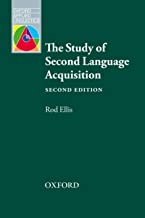
This course focuses on second language acquisition (SLA). It is divided into two parts. The first part outlines some general concepts concerning the field of SLA and the second part provides an overview of some of the most influential SLA theories. The aim of this course is to introduce participants to the major concepts and theories of SLA. By the end of the course participants will gain an understanding of basic concepts of SLA. They will be able to explore and evaluate SLA theories from the point of view of second language learners.
This course is a general introduction to scientific research into how people learn a second language. Although the course is designed to be accessible to students from a wide variety of backgrounds, some knowledge of the linguistic structure of English will be assumed.
Second language acquisition, or SLA, is a theoretical and experimental field of study which, like first language acquisition studies, looks at the phenomenon of language development -- in this case the acquisition of a second language. The term "second" includes "foreign" and "third", "fourth" (etc.). Since the early nineteen seventies, SLA researchers have been attempting to describe and explain the behavior and developing systems of children and adults learning a new language.
The dominant aim behind this research is to extend our understanding of the complex processes and mechanisms that drive language acquisition.
By virtue of the fact that language itself is complex, SLA has become a broadly-based field and it now involves:
| Studying the complex pragmatic interactions between learners, and between learners and native speakers | |
| Examining how non-native language ability develops, stabilizes, and undergoes attrition (forgetting, loss) | |
| Carrying out an analysis and interpretation of all aspects of learner language with the help of current linguistic theory | |
| Developing theories that are specific to the field of SLA that aim to account for the many facets of non-native language and behavior | |
| Testing hypotheses to explain second language knowledge and behavior |
UNIT I
UNIT II
UNIT III
UNIT IV
UNIT V
UNIT VI
UNIT VII
UNIT VIII
UNIT IX
UNIT X
UNIT XI
UNIT XII
UNIT XIII
UNIT XIV
UNIT XV
UNIT XVI
UNIT XVII
UNIT XVIII










